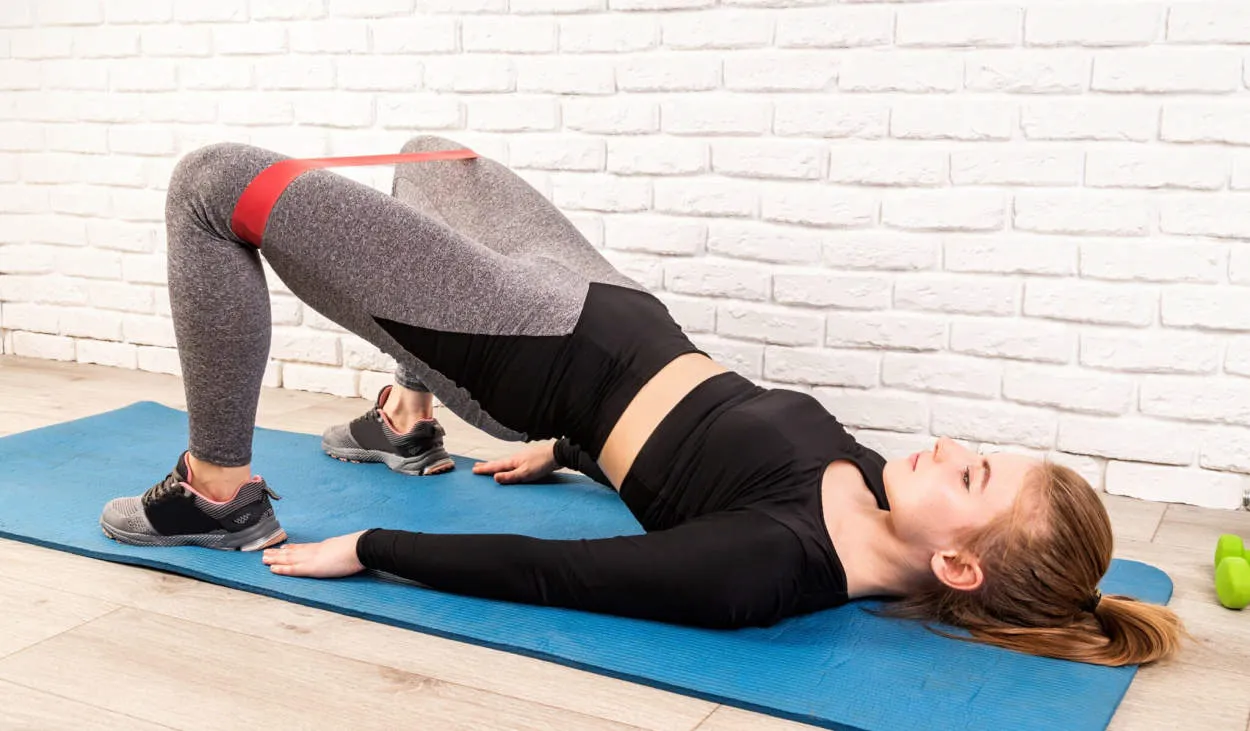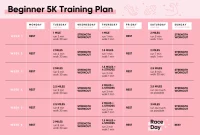Building core strength is essential for athletes looking to improve their performance. Stronger core muscles not only enhance stability and balance, but also help generate power and transfer energy more efficiently during sports movements. In this article, we will explore some of the most effective exercises to strengthen your core and take your athletic abilities to the next level.
The Importance of a Strong Core
A strong core is essential for athletes looking to improve their performance and overall fitness. The core, which includes muscles in the abdomen, lower back, hips, and pelvis, serves as the foundation for all movements in the body. Here are some key reasons why building core strength should be a priority for every athlete:
1. Injury Prevention
A strong core helps stabilize the spine and improve posture, reducing the risk of injuries during physical activities. By strengthening the muscles in the core, athletes can protect their back and surrounding muscles from strain or stress commonly found in sports.
2. Improved Stability and Balance
A strong core provides a solid base of support, allowing athletes to maintain better balance and stability. This is especially crucial for activities that require agility, such as running, jumping, and changing directions quickly. With enhanced stability, athletes can perform at their best and avoid any unsteady movements that may lead to falls or missteps.
3. Enhanced Performance
A powerful core is the key to generating and transferring force efficiently throughout the body. By strengthening the core muscles, athletes can maximize their power output, enabling them to run faster, jump higher, and hit harder. Whether it’s in team sports or individual competitions, a strong core can significantly boost overall performance.
4. Injury Rehabilitation
For athletes recovering from injuries, core exercises play a vital role in the rehabilitation process. Core strengthening exercises help rebuild stability and regain proper muscle function, gradually restoring overall strength and preventing future injuries.
5. Functional Fitness
A strong core is not just beneficial for athletes but for everyone in their day-to-day activities. It improves posture, supports the spine, and enables efficient and comfortable movements. Whether you’re carrying groceries or lifting objects, a strong core allows you to perform these tasks with ease and reduces the risk of strains or back problems.
Building core strength should be a priority for all athletes, regardless of their sport or fitness level. Including exercises that target the core in training routines can have a significant impact on performance, injury prevention, and overall well-being.
Core Strengthening Workouts
In the world of athletics, building a strong core is essential for optimal performance and injury prevention. The core muscles, including the abs, obliques, and lower back, provide stability, power, and balance throughout various sports. Incorporating core strengthening workouts into your training routine is crucial for enhancing athletic performance and overall fitness.
Plank
The plank is a foundational exercise that targets the entire core. Start by assuming a push-up position, resting your weight on your forearms and toes. Engage your core muscles and maintain a straight line from your head to your heels. Hold this position for as long as possible, gradually increasing the duration as your strength improves.
Russian Twists
Russian twists are excellent for targeting the obliques. Sit on the floor with your knees bent and feet flat. Lean slightly back, engage your core, and lift your feet off the ground. While holding a weight or medicine ball, twist your torso from side to side, touching the weight to the floor on each side. Perform this exercise in a controlled manner to maximize its effectiveness.
Dead Bug
The dead bug exercise is great for strengthening the abs and lower back while improving coordination. Lie on your back with your arms extended towards the ceiling and your knees bent at a 90-degree angle. Slowly lower your opposite arm and leg towards the floor while maintaining a stable core. Return to the starting position and repeat on the other side.
Medicine Ball Slams
Medicine ball slams are an explosive exercise that engages the entire core. Stand with your feet shoulder-width apart, holding a medicine ball above your head. Forcefully slam the ball into the ground, squatting down and using your core muscles to generate power. Catch the ball on the bounce, stand up, and repeat the movement.
Remember, when performing core strengthening workouts, proper form and technique are crucial. It’s also important to progressively increase the intensity and difficulty of the exercises as your core muscles become stronger. By incorporating these workouts into your training routine, you’ll develop a solid core foundation to support your athletic endeavors.
Integrating Core Exercises into Regular Training
Building core strength is essential for athletes looking to improve their performance and prevent injuries. Incorporating core exercises into your regular training routine can help you achieve these goals. Here are some key exercises to include:
1. Plank
The plank is a basic yet effective exercise that engages the core muscles, including the abs, back, and glutes. Start by lying face down on the floor, then lift your body off the ground, resting on your forearms and toes. Hold this position for as long as you can while maintaining proper form.
2. Russian Twists
Russian twists target the obliques and improve rotational stability. Sit on the floor with your knees bent and feet flat. Lean back slightly and lift your feet off the ground. Twist your torso from side to side, touching the floor on each side with your hands.
3. Bicycle Crunches
Bicycle crunches engage not only the abs but also the hip flexors and obliques. Lie on your back with your knees bent and hands behind your head. Lift your shoulders off the ground and bring your right elbow to your left knee while straightening your right leg. Alternate sides in a pedaling motion.
4. Dead Bug
The dead bug exercise is beneficial for strengthening the core and improving stability. Lie on your back with your arms extended toward the ceiling and your knees bent at a 90-degree angle. Slowly lower your right arm and left leg toward the ground while keeping your core engaged. Return to the starting position and repeat with the opposite limbs.
By incorporating these core exercises into your regular training routine, you can enhance your athletic performance and reduce the risk of injuries. Remember to start with proper form and gradually increase the intensity as your core strength improves.
Measuring Core Strength Progress
Building core strength is essential for athletes as it serves as a foundation for overall performance and injury prevention. To track your progress in developing a strong core, measuring key indicators can be helpful.
One way to assess core strength is through plank exercises. Performing a plank and timing how long you can hold the position can give you an idea of your core endurance. As you consistently work on your core, aim to increase the time you can hold the plank steadily.
Another method is by testing your stability and balance. Exercises like the single-leg balance or side plank with leg raise can challenge your core’s ability to stabilize your body. Take note of how long you can maintain proper form and try to improve it over time.
Additionally, measuring your core strength progress can involve tracking improvements in other exercise routines. For example, if you notice increased weightlifting or running performance, it may indicate an improvement in core strength as a strong core supports these activities.
Remember, when measuring core strength progress, it’s crucial to focus on overall improvement rather than comparing yourself to others. Each individual has a unique starting point and progress rate, so stay committed and consistent in your core training routine to achieve long-lasting results.
Core Training Success Stories from Athletes
Building core strength is essential for athletes to improve their performance and prevent injuries. Many athletes have incorporated core training into their workout routines and have witnessed remarkable results. Here are some inspiring success stories:
1. Sarah Johnson – Runner
Sarah, a competitive runner, struggled with back pain and a lack of stability during races. After adding core exercises such as planks and Russian twists to her training, she noticed a significant improvement. Not only did her back pain reduce, but her running form became more efficient, allowing her to achieve faster race times.
2. Michael Rodriguez – Swimmer
Michael, an aspiring swimmer, wanted to enhance his propulsion and stability in the water. By incorporating exercises like flutter kicks and bicycle crunches, he strengthened his core muscles. As a result, Michael experienced increased power in his strokes and improved body control while swimming, leading to better overall performance.
3. Amy Chen – Gymnast
Amy, a gymnast, aimed to improve her balance and control during complex routines. Through regular core training involving exercises like hollow holds and leg raises, she developed a solid core foundation. This enabled her to execute intricate moves with greater precision and stability, resulting in higher scores during competitions.
These success stories highlight the importance of core training for athletes in various sports. Strengthening the core not only helps to improve performance but also provides numerous benefits such as increased stability, reduced risk of injury, and enhanced overall athleticism.
Conclusion
Developing core strength is crucial for athletes as it enhances performance, reduces the risk of injuries, and improves overall stability and balance. Incorporating exercises like planks, Russian twists, and deadlifts into your training routine can help to strengthen the core muscles effectively. Remember, consistency and proper form are key to achieving optimal results.




